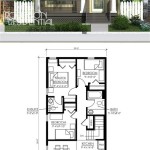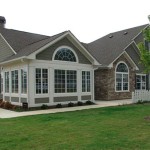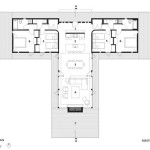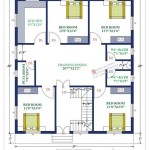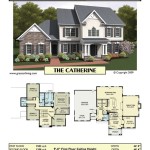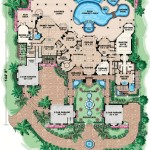House Plans for Sloped Lots are specifically designed to accommodate the challenges and opportunities that come with building on a hillside or sloping terrain. They consider factors such as drainage, erosion, and the unique architectural considerations that come with uneven surfaces.
Sloped lots offer a unique opportunity to create homes with distinct character and panoramic views. For example, a house plan for a sloped lot might incorporate split-level design, with the main living areas elevated to take advantage of the views, while the lower levels are used for utilities and storage. These plans are essential for ensuring safe, functional, and visually stunning homes on sloped lots.
In the following sections, we will explore the key considerations for house plans for sloped lots, discuss different types of plans, and provide tips for selecting the right plan for your needs.
When designing a house plan for a sloped lot, it’s important to consider the following key points:
- Drainage and Erosion Control: Ensure proper drainage to prevent water damage and erosion.
- Foundation Design: Choose a foundation type suitable for the slope, such as a stepped or pier foundation.
- Split-Level Design: Divide the house into different levels to accommodate the slope.
- Terracing: Create level areas on the slope for outdoor living spaces.
- Retaining Walls: Use retaining walls to hold back soil and create usable space.
- Natural Light: Design windows and skylights to maximize natural light while considering privacy.
- Accessibility: Plan for easy access to all areas of the house, including the backyard.
- Views and Orientation: Orient the house to take advantage of views and natural light.
Considering these factors will help ensure a safe, functional, and visually stunning home on a sloped lot.
Drainage and Erosion Control: Ensure proper drainage to prevent water damage and erosion.
Proper drainage and erosion control are essential considerations for house plans on sloped lots. Water runoff from heavy rains or snowmelt can cause severe damage to the foundation, landscaping, and overall structural integrity of the home if not managed effectively.
To ensure proper drainage, the house plan should incorporate measures such as:
- Grading: Grading the land around the house to direct water away from the foundation.
- Gutters and Downspouts: Installing gutters and downspouts to collect and redirect rainwater away from the house.
- French Drains: Installing French drains to collect and divertaway from the foundation.
Erosion control measures are also crucial to prevent soil erosion and maintain the stability of the slope. These measures may include:
- Retaining Walls: Constructing retaining walls to hold back soil and prevent erosion.
- Terracing: Creating level areas on the slope to reduce the risk of erosion.
- Planting Vegetation: Planting vegetation on the slope to help stabilize the soil and prevent erosion.
By incorporating proper drainage and erosion control measures into the house plan, homeowners can protect their homes from water damage, erosion, and other potential hazards.
Foundation Design: Choose a foundation type suitable for the slope, such as a stepped or pier foundation.
The foundation of a house on a sloped lot must be carefully designed to ensure stability and prevent structural damage. Different foundation types are suitable for different slopes and soil conditions.
- Stepped Foundation: A stepped foundation is a series of concrete steps that follow the slope of the land. This type of foundation is suitable for moderate slopes and provides a level surface for the house to be built on.
- Pier Foundation: A pier foundation consists of concrete piers that are sunk into the ground and support the house. This type of foundation is suitable for steep slopes and unstable soil conditions.
- Crawl Space Foundation: A crawl space foundation has a raised floor system that creates a crawl space between the ground and the house. This type of foundation allows for easy access to plumbing and electrical systems and is suitable for moderate slopes.
- Basement Foundation: A basement foundation extends below the ground level and provides additional living space or storage. This type of foundation is suitable for flat or gently sloping lots and requires extensive excavation.
The choice of foundation type should be made in consultation with a qualified engineer or architect who can assess the specific conditions of the slope and soil on the building site.
Split-Level Design: Divide the house into different levels to accommodate the slope.
Split-level design is a common approach for house plans on sloped lots. It involves dividing the house into different levels that follow the slope of the land. This design strategy offers several advantages:
- Adapts to the Topography: Split-level design allows the house to conform to the natural contours of the slope, minimizing the need for extensive excavation or grading.
- Creates Usable Space: By dividing the house into different levels, split-level design creates usable space on what would otherwise be unusable sloping land.
- Maximizes Views: Split-level design can be used to position different rooms at different elevations, maximizing views from various parts of the house.
- Improves Accessibility: Split-level design can reduce the need for stairs or elevators, making the house more accessible for people with mobility limitations.
Split-level design can be implemented in various ways, depending on the specific slope and the desired layout of the house. Some common split-level designs include:
- Two-Level Split: This is the simplest type of split-level design, with two levels that are separated by a few steps.
- Three-Level Split: This design includes three levels, with the main living areas on the middle level.
- Multi-Level Split: This design features multiple levels that are connected by stairs or ramps, creating a more complex and visually interesting layout.
Split-level design can be an effective solution for building on sloped lots, offering advantages in terms of functionality, space utilization, and aesthetics.
Terracing: Create level areas on the slope for outdoor living spaces.
Terracing involves creating level areas on a sloped lot by constructing retaining walls or other structures that hold back the soil. This technique serves several purposes:
- Extend Usable Space: Terraces extend the usable space of a sloped lot by creating flat areas suitable for outdoor living, gardening, or other activities.
- Improve Accessibility: Terraces reduce the steepness of the slope, making it easier to access different areas of the yard and enjoy the outdoors.
- Control Erosion: Terraces help control erosion by preventing soil from washing away on steep slopes.
- Enhance Aesthetics: Terraces can add visual interest and dimension to a sloped lot, creating a more attractive and inviting outdoor space.
Terraces can be constructed using various materials, including:
- Concrete Blocks: Concrete blocks are a durable and versatile material for building retaining walls and terraces.
- Natural Stone: Natural stone, such as flagstone or slate, provides a rustic and elegant look to terraces.
- Pressure-Treated Lumber: Pressure-treated lumber is a cost-effective option for building raised terraces or decks.
- Gabion Walls: Gabion walls are baskets filled with rocks or other materials, offering a unique and natural-looking alternative to traditional retaining walls.
When designing terraces for a sloped lot, it’s important to consider factors such as the height of the slope, the soil conditions, and the desired use of the space. Professional landscape architects or contractors can provide guidance on the best materials and techniques for creating safe and functional terraces on sloped lots.
Terraces not only enhance the functionality and accessibility of sloped lots but also add aesthetic value, creating beautiful and inviting outdoor living spaces.
Retaining Walls: Use retaining walls to hold back soil and create usable space.
Retaining walls are an essential element in house plans for sloped lots. They perform the critical function of holding back soil and creating usable space on otherwise unusable slopes.
- Soil Retention: The primary purpose of retaining walls is to retain soil on sloping land, preventing erosion and landslides. They create a stable structure that supports the weight of the soil, ensuring the safety and stability of the property.
- Usable Space Creation: Retaining walls allow for the creation of flat and usable areas on sloped lots. By holding back the soil, they create level surfaces that can be used for patios, gardens, driveways, or other outdoor living spaces.
- Slope Stabilization: Retaining walls help stabilize slopes, reducing the risk of soil erosion and collapse. They act as a barrier against water runoff and other forces that can destabilize the soil, protecting the integrity of the slope.
- Aesthetic Enhancement: Retaining walls can also enhance the aesthetic appeal of a sloped lot. They can be constructed using various materials and designs, adding visual interest and dimension to the outdoor space.
Retaining walls are crucial for the safety, functionality, and aesthetics of house plans on sloped lots. They enable homeowners to maximize the use of their land, create beautiful outdoor spaces, and protect their property from soil erosion and slope instability.
Natural Light: Design windows and skylights to maximize natural light while considering privacy.
Natural light is essential for creating a comfortable and inviting living space. In house plans for sloped lots, careful consideration must be given to the placement and design of windows and skylights to maximize natural light while ensuring privacy.
Maximize Natural Light: Sloped lots often offer unique opportunities to capture natural light from multiple directions. By strategically placing windows and skylights on different elevations, homeowners can flood their homes with sunlight throughout the day. This not only reduces the need for artificial lighting but also creates a brighter and more cheerful living environment.
Privacy Considerations: While maximizing natural light is important, privacy is also a key concern. Windows and skylights should be positioned to allow for ample light without compromising the privacy of the occupants. This can be achieved by using frosted glass, curtains, or blinds to control the amount of light and visibility from outside.
Energy Efficiency: Energy efficiency is another important factor to consider when designing windows and skylights for sloped lots. Energy-efficient windows and skylights can help reduce heat loss in cold climates and heat gain in warm climates, resulting in lower energy bills and a more comfortable indoor environment.
Unique Design Opportunities: Sloped lots present unique design opportunities for windows and skylights. Clerestory windows, which are placed high on a wall and extend above the roofline, can be used to bring natural light into upper levels of the home. Skylights, strategically placed on the roof, can flood interior spaces with natural light while maintaining privacy.
Accessibility: Plan for easy access to all areas of the house, including the backyard.
Accessibility is a crucial consideration in house plans for sloped lots to ensure that all areas of the home are easily accessible and enjoyable for all occupants.
- Ramps and Slopes: Incorporating ramps or gentle slopes in the design can provide wheelchair access and make it easier for individuals with mobility limitations to navigate different levels of the house and access the backyard.
- Wide Doorways: Wider doorways throughout the house, including the entrance to the backyard, allow for easy passage of wheelchairs, strollers, and other mobility aids.
- Non-Slip Surfaces: Using non-slip surfaces on walkways, patios, and decks helps prevent falls and accidents, especially in areas with moisture or uneven terrain.
- Universal Design Features: Implementing universal design features, such as lever door handles, grab bars in bathrooms, and accessible kitchen appliances, makes the home more accessible and comfortable for people of all abilities.
By carefully planning for accessibility, homeowners can create a sloped lot home that is both functional and enjoyable for everyone, regardless of their mobility or age.
Views and Orientation: Orient the house to take advantage of views and natural light.
The orientation of a house on a sloped lot plays a crucial role in maximizing natural light and capturing captivating views. Careful planning and consideration of the following factors can lead to a home that is not only visually stunning but also energy-efficient and enjoyable to live in.
- Maximize Views: Sloped lots often offer breathtaking views of the surrounding landscape. By orienting the house towards the most desirable views, homeowners can create a connection between the indoors and outdoors, bringing the beauty of nature into their living spaces. Large windows and balconies can be strategically placed to frame panoramic vistas and create a seamless transition between the interior and exterior.
- Natural Light: Natural light is essential for creating a warm and inviting home environment. Sloped lots provide opportunities to design houses that take full advantage of natural light. By positioning windows and skylights on the south-facing side of the house, homeowners can maximize exposure to sunlight throughout the day. This not only reduces the need for artificial lighting but also creates a healthier and more sustainable living space.
- Thermal Comfort: The orientation of the house can also impact thermal comfort. By orienting the house to face prevailing breezes, homeowners can take advantage of natural ventilation to cool the house during warm months. Overhangs and awnings can be used to shade windows and reduce heat gain during the summer, while allowing sunlight to enter during the winter months for passive solar heating.
- Privacy: While views and natural light are important considerations, privacy is also essential. Careful placement of windows and the use of landscaping can help maintain privacy while still allowing for ample natural light and views. Frosted glass, curtains, and strategically placed trees or shrubs can be used to create a balance between openness and privacy.
By considering these factors and working with an experienced architect or designer, homeowners can create house plans for sloped lots that optimize views, natural light, thermal comfort, and privacy, resulting in a home that is both beautiful and functional.










Related Posts

